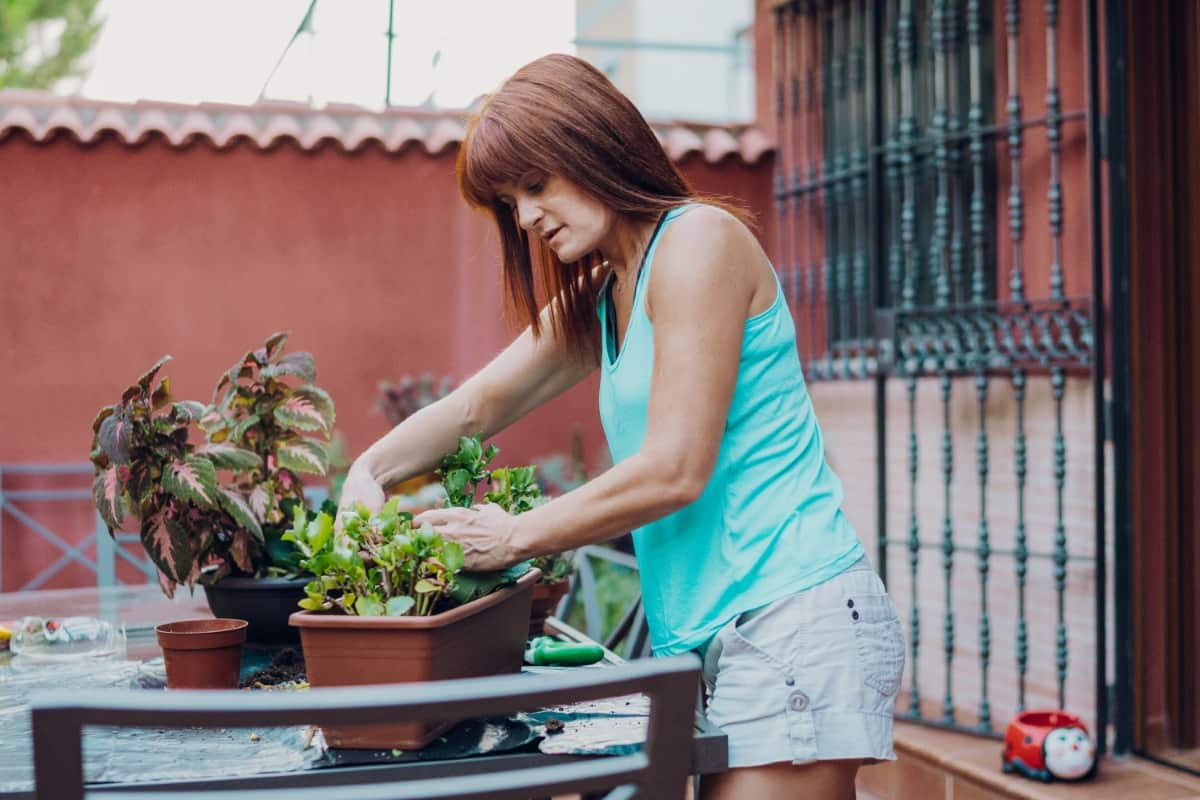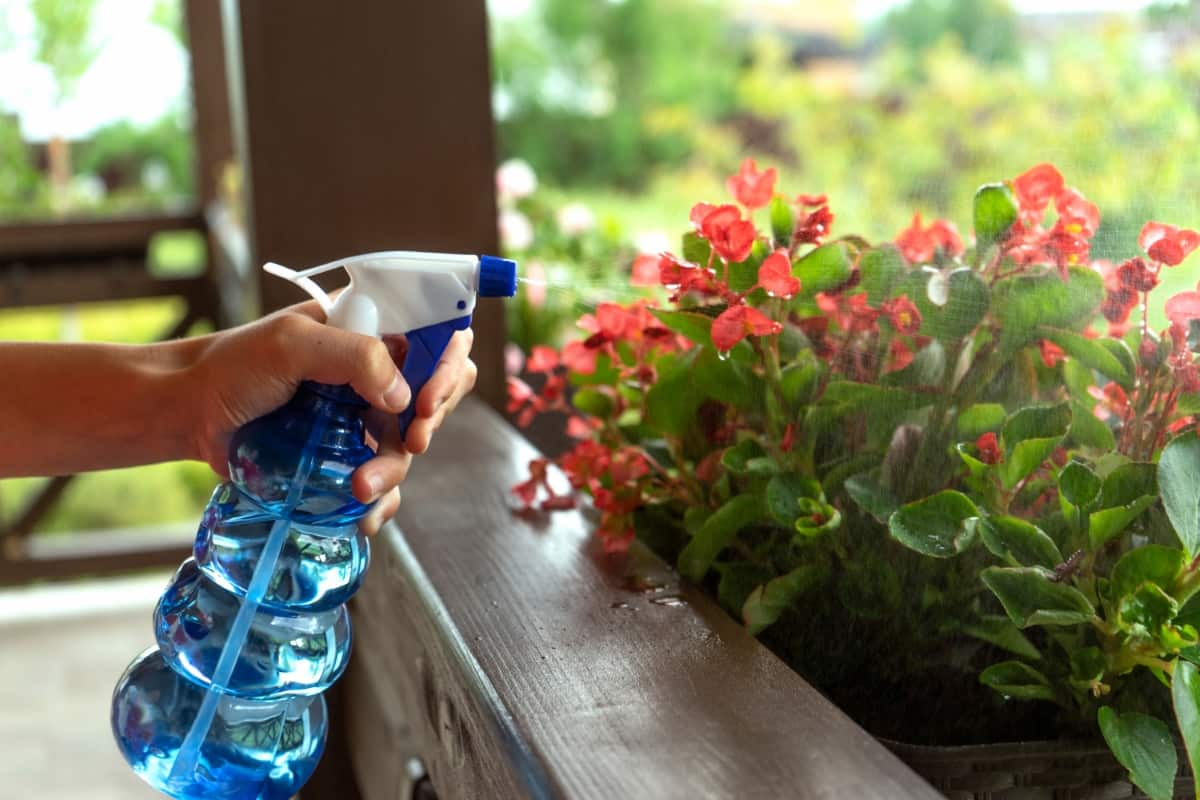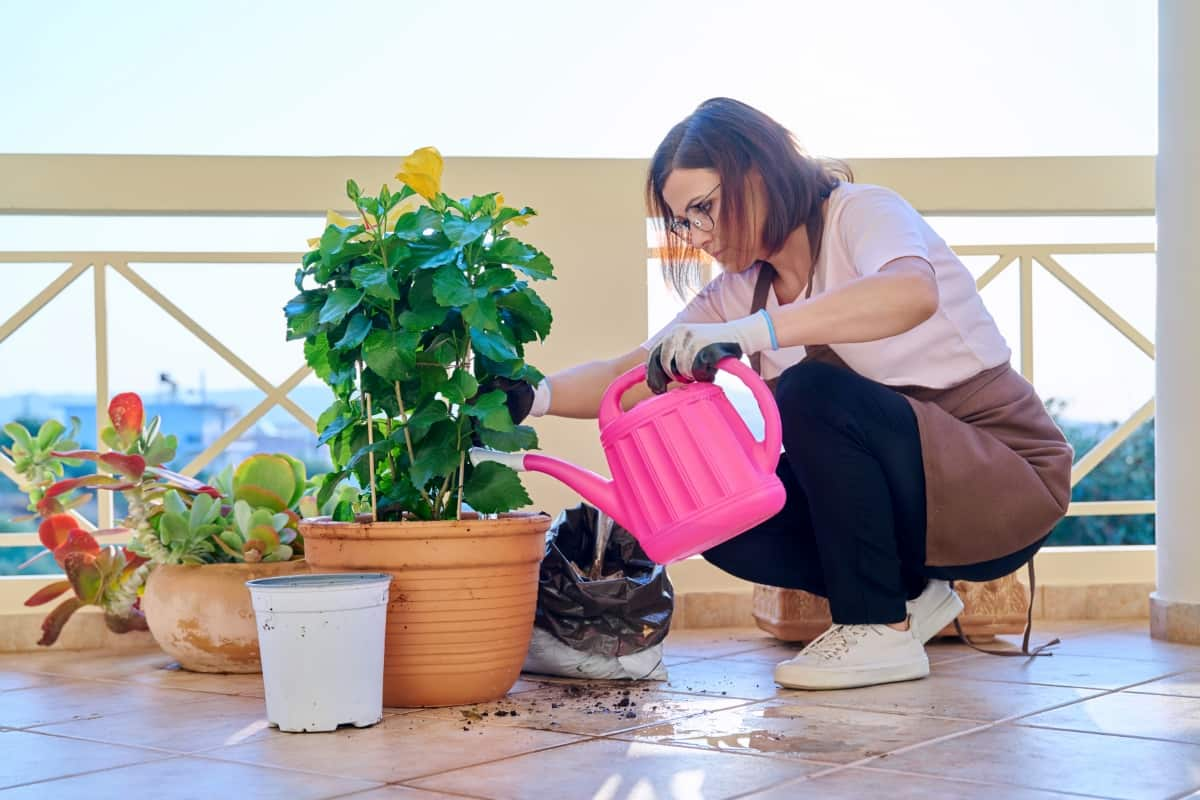Terrace gardens offer a convenient and enjoyable way to cultivate plants in urban environments, but they also come with their own set of challenges, including pests and diseases. Neem oil, derived from the neem tree (Azadirachta indica), is a natural and effective solution to address these issues in a terrace garden. Known for its pesticidal and medicinal properties, neem oil is popular for organic gardening. In this guide, we will walk you through the step-by-step process of using neem oil on terrace garden plants.

How to Use Neem Oil on Terrace Garden Plants
A Natural Neem Oil Solution for Terrace Garden Plants
Create a natural neem oil solution to nurture your terrace garden plants by combining 1 liter of water with 10 ml of neem oil. Neem oil, extracted from the neem tree’s seeds, is a potent organic pesticide and fungicide. Add a few dish soap liquid drops to the mixture to help the oil disperse evenly and adhere to plant surfaces. Shake the solution well and transfer it to a spray bottle.
Apply the neem oil solution to your terrace garden plants, mainly focusing on the undersides of leaves where pests often hide. This natural remedy is a deterrent for pests, disrupts their life cycle, and prevents fungal infections. Use it every 7-14 days or as needed, especially during the growing season. Embracing this neem oil solution ensures a thriving, pest-free terrace garden while maintaining an eco-friendly approach to plant care.
Benefits of Using Neem Oil on Terrace Garden Plants
- Firstly, it acts as a powerful natural pesticide, effectively repelling and controlling various pests such as aphids, mites, and caterpillars.
- Its antifungal properties make it an excellent solution for preventing and treating fungal infections, ensuring the health of your plants.
- Neem oil also serves as a growth stimulant, promoting the development of strong and vibrant foliage.
- Moreover, it is safe for beneficial insects like bees and ladybugs, preserving the ecological balance in your garden.
- Regular application of neem oil enhances the plant’s disease resistance, fostering a robust and resilient garden ecosystem.
- By opting for neem oil, you protect your terrace garden from pests and diseases and embrace a sustainable and eco-friendly approach to plant care.
Step-By-Step Instructions for Applying Neem Oil on Terrace Garden Plants
- Mixing Solution: In a container, blend 1 liter of water with 10 ml of neem oil. Add a few mild liquid soap drops to help distribute the oil evenly.
- Shake Well: Thoroughly shake the solution to ensure proper emulsification of neem oil.
- Transfer to Spray Bottle: Pour the neem oil mixture into a spray bottle, making it convenient for application.
- Application: Spray the solution on your terrace garden plants, mainly focusing on the undersides of leaves where pests often hide.
- Repeat: Apply the neem oil solution every 7-14 days or as needed, particularly during the growing season.
In case you missed it: How to Use Neem Oil on Rose Plants: Best Natural Way to Eradicate Rose Pests

Neem Oil as An Effective Pest Control Method for Terrace Gardens
Neem oil stands as a highly effective and natural pest control method for terrace gardens. Derived from the neem tree, this oil contains compounds that act as potent insect repellents and disrupt the life cycles of various pests. When applied to terrace garden plants, neem oil is a deterrent against common invaders like aphids, mites, and caterpillars.
Its multifaceted action extends to being a fungicide, protecting plants from diseases and fungal infections. Notably, neem oil achieves these pest-control benefits without harming beneficial insects, maintaining a balanced and eco-friendly garden ecosystem. Regular application of neem oil not only safeguards plants but also contributes to your terrace garden’s overall health and vitality.
How to Dilute and Mix Neem Oil for Terrace Garden Plants
To properly dilute and mix neem oil for your terrace garden plants, combine 1 liter of water with 10 ml of neem oil. Neem oil is highly concentrated, so this dilution is effective for pest control without harming plants. Additionally, add a few drops of mild liquid soap to the mixture; this aids in even distribution and adherence to plant surfaces. The soap breaks the surface tension, allowing the neem oil to spread more effectively.
Once these ingredients are combined in a container, shake the mixture thoroughly to ensure a homogenous blend. Transfer the diluted neem oil solution into a spray bottle for convenient application. This solution can be applied to the plants, mainly focusing on the undersides of leaves where pests often reside. Use this natural neem oil mixture regularly, every 7-14 days or as needed, for a healthy and pest-resistant terrace garden.
Treating Common Plant Diseases with Neem Oil on Your Terrace Garden
Combat common plant diseases on your terrace garden effectively with neem oil. Mix 1 liter of water with 10 ml of neem oil and a few liquid soap drops for fungal infections like powdery mildew or leaf spot. Shake well and spray this solution on affected plants every 7-14 days. Neem oil’s antifungal properties act as a preventive measure and inhibit the spread of diseases.
In case you missed it: How to Use Neem Oil on Container Plants: A Natural Way to Get Rid of Container Garden Pests

To address bacterial issues, prepare a neem oil solution, as mentioned, targeting plants with symptoms like wilting or leaf spots. This treatment helps suppress bacterial growth and supports plant recovery. For viral infections, though neem oil may not directly treat viruses, its immune-boosting properties can enhance plant resistance. Apply the neem oil mixture regularly to create a protective barrier.
Neem Oil Application Techniques for Maximum Effectiveness on Terrace Garden Plants
- Thorough Coverage: Ensure comprehensive coverage by applying the neem oil solution to the tops and undersides of leaves, stems, and visible pests.
- Regular Application: Maintain a consistent schedule, applying neem oil every 7-14 days or as needed, especially during the growing season, for maximum effectiveness.
- Early Morning or Late Evening: Apply neem oil during cooler parts of the day to prevent leaf burn and ensure better absorption.
- Avoid High Temperatures: Refrain from applying neem oil in extreme heat, which can lead to evaporation and reduced effectiveness.
Tips for Using Neem Oil Safely on Your Terrace Garden Plants
- Dilution Ratio: Dilute neem oil as recommended to prevent potential plant damage. Typically, a 1 liter of water mixture with 10 ml of neem oil is effective.
- Soap Addition: Include a few drops of mild liquid soap in the neem oil solution to aid in even distribution and adhesion to plant surfaces.
- Test Spot: Before widespread application, test the neem oil solution on a small, inconspicuous part of a plant to ensure no adverse reactions.
- Protective Gear: Wear protective clothing, gloves, and eyewear during application to prevent skin and eye irritation.
- Apply in Cooler Temperatures: Choose early morning or late evening for application to avoid leaf burn and allow for better absorption.
In case you missed it: Using Neem Oil on Cucumber Plants: A Natural Way to Control Cucumber Pests

Conclusion
In conclusion, utilizing neem oil on terrace garden plants involves a strategic approach for optimal results. Dilute the oil, ensure thorough coverage, and apply regularly, especially during the growing season. Neem oil’s natural properties make it a potent pest control and disease prevention tool. By following this step-by-step guide, you protect your plants effectively and contribute to your terrace garden’s overall health and sustainability.
- Ultimate Guide to Ossabaw Island Hog: Breeding, Raising, Diet, and Care
- Ultimate Guide to Juliana Pig: Raising Facts, Size, Diet, Care, and Lifespan
- Raising Lleyn Sheep: Disadvantages, Price, Uses, Characteristics, and Care
- Ultimate Guide to Meishan Pig: Breed Facts, Breeding, Raising, and Care
- Ultimate Guide to Teacup Pigs: Raising, Diet, Lifespan, Cost, and Care
- Guide to Raising Poll Dorset Sheep: Facts, Profile, Characteristics, Uses, and Care
- Ultimate Guide to Bighorn Sheep: Characteristics, Diet, Lifespan, Breeding, and Lifecycle
- Ultimate Guide to Raising Katahdin Sheep: Farming Facts, Breed Profile, Uses, and Care
- Ultimate Guide to Raising Oreo Cows: Belted Galloways Farming Facts, Profile, Uses, and Care